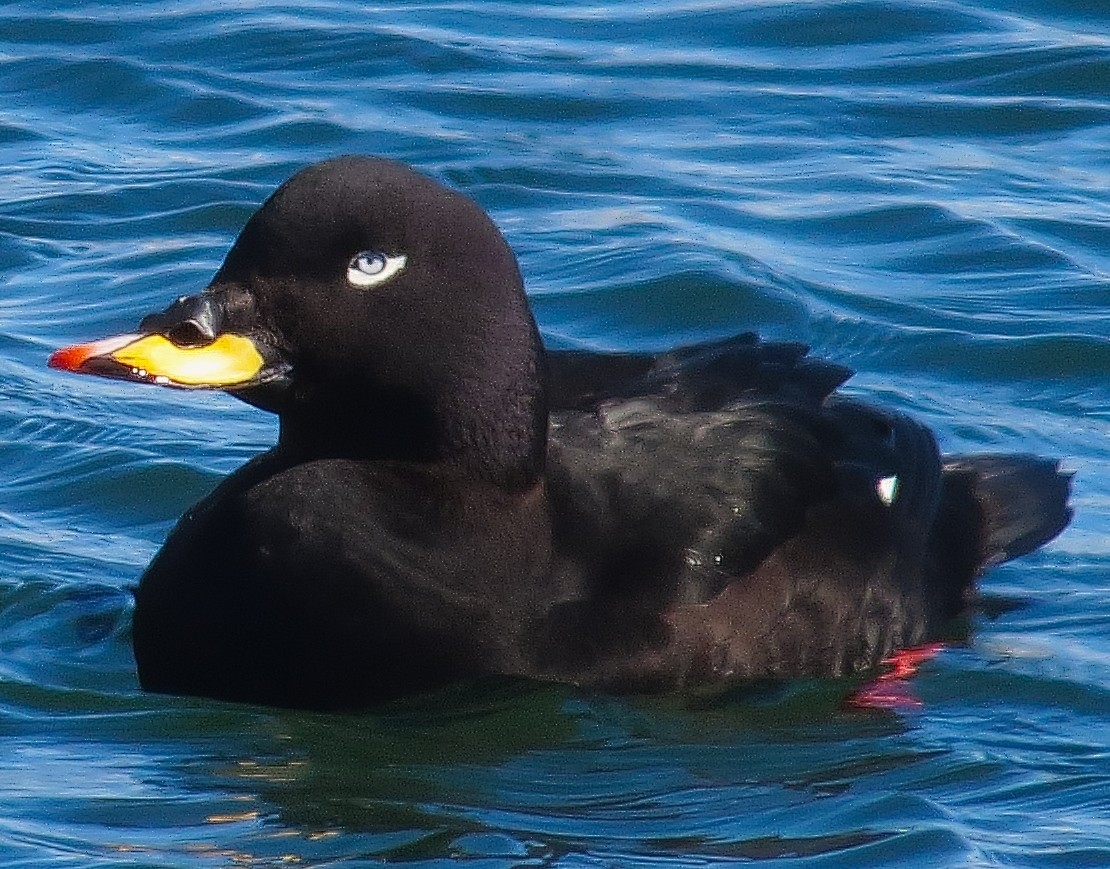Velvet Scoter
A species of Scoters Scientific name : Melanitta fusca Genus : Scoters
Velvet Scoter, A species of Scoters
Botanical name: Melanitta fusca
Genus: Scoters
Content
Description People often ask General Info
Description
The velvet scoter (Melanitta fusca), also called a velvet duck, is a large sea duck, which breeds over the far north of Europe and the Palearctic west of the Yenisey basin. The genus name is derived from Ancient Greek melas "black" and netta "duck". The species name is from the Latin fuscus "dusky brown". A small, isolated population nests in eastern Turkey. Stejneger's scoter and the white-winged scoter are sometimes considered conspecific with the velvet scoter, and its two constituent subspecies are then known as M. f. stejnegeri and M. f. deglandi. Velvet, Stejneger's, and white-winged scoter, along with the surf scoter, are placed in the subgenus Melanitta, distinct from the subgenus Oidemia, black scoter and common scoters. It winters farther south in temperate zones, Europe as far south as Great Britain, and on the Black and Caspian Sea. Small numbers reach France and northern Spain. It forms large flocks on suitable coastal waters. These are tightly packed, and the birds tend to take off together. The species is listed as Vulnerable by the IUCN. The lined nest is built on the ground close to the sea, lakes or rivers, in woodland or tundra, and typically contains 7–9 eggs. This duck dives for crustaceans and molluscs. It is characterised by its bulky shape and large bill. It is the largest scoter at 51–58 cm. The male is all black, except for white around the eye and a white speculum. It has a bulbous yellow bill with a black base. The females are brown birds with two pale patches on each side of the head and white wing patches. The velvet scoter is one of the species to which the Agreement on the Conservation of African-Eurasian Migratory Waterbirds (AEWA) applies. 
Size
58 cm
Colors
Brown
Black
White
Life Expectancy
13 years
Nest Placement
Ground
Feeding Habits
Velvet Scoter primarily consumes aquatic molluscs and insects, diving underwater to forage. It exhibits a unique preference for shellfish, exploiting specialized bill adaptations to extract prey from shells.
Habitat
Velvet Scoter's primary habitat encompasses coastal seas, with breeding grounds in boreal forests and Arctic tundra near freshwater bodies. Occasionally, it breeds inland or by wooded shores. Geographically, it favors the Arctic and sub-Arctic regions, with occasional inland sightings. Wintering habitats include shallower littoral zones with sandy seabeds rich in infaunal benthic communities. Juveniles may remain at sea throughout their first year.
Dite type
Piscivorous
People often ask
General Info
Feeding Habits
Bird food type
Species Status
VULNERABLE. Numbers best known from counts in wintering areas: similar downwards trend in numbers as suspected for other Melanitta species, at least in parts of.
